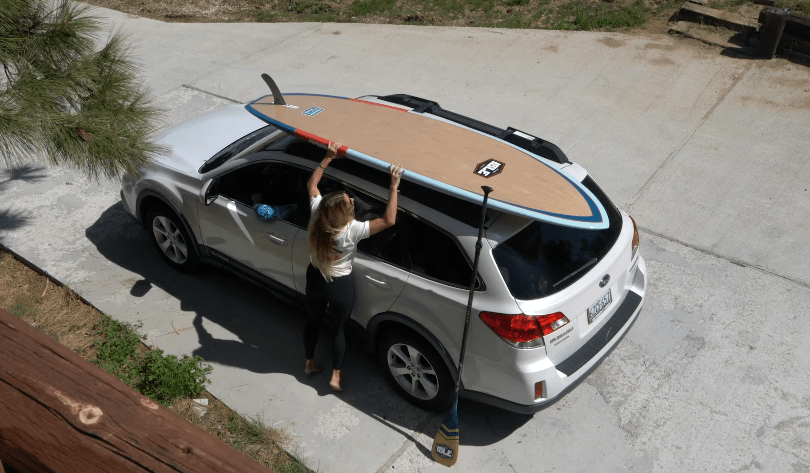You’ve decided to get yourself a paddleboard but should you get a solid or an inflatable one? What are the differences between inflatable and solid SUP boards? After all, each type has its unique advantages and disadvantages.
The best personal choice will depend on factors such as your performance needs, paddling style and storage and transportation options. Now let’s take an in-depth look at the differences between inflatable and solid SUP boards.
Differences Between Inflatable and Solid SUP Boards
1. Storage and Portability
It’s obvious that inflatable paddleboards would be easier to store and transport. They can be quickly deflated, rolled up and placed into a carry bag. This would be a blessing if you have limited storage space or if you want to travel on public transport or even on an electric bike with your board. On the other hand, solid boards require more storage space and a suitable vehicle or rack system to transport them.

2. Durability
It might surprise you to know that inflatable paddleboards are particularly tough. They’re made from strong PVC or similar material so they can handle drops and bumps without major damage. Solid paddleboards are also sturdy but they can get nicked and scratched, especially if you use them in shallow or rocky areas.
3. Performance on Water
Hard paddleboards generally perform better when it comes to speed and gliding on water. Their greater rigidity does make it possible to paddle and maneuver them more efficiently. Inflatable paddleboards have become more adept at performance but they might not be as speedy or smooth-gliding as a solid board, especially if you’re racing.
4. Degree of Stiffness
Good-quality inflatable paddleboards can be pretty stiff when they’re fully inflated but they could still bend in some situations. Solid paddleboards provide a firm, steady platform that are often preferred for activities such as SUP racing or surfing, where board responsiveness is crucial.
5. Price
The cost of solid and inflatable stand-up paddleboards can vary widely. However, good-quality inflatable boards are generally less expensive than their solid counterparts. This is mainly due to the manufacturing processes and materials involved in producing a lightweight, solid board.
6. Set-Up Time
You’ll need around five to ten minutes to inflate an inflatable paddleboard with a hand pump before it’s ready for use. An electric paddleboard pump takes about one minute per PSI, therefore it should take between ten and fifteen minutes to fully inflate an inflatable SUP. A solid paddleboard is good to go as soon as you reach the water, which saves you time and effort.
7. Versatility
Inflatable paddleboards are often considered to be more practical because of their toughness and ease of transport. They would be a good choice for families, people who travel with their boards and those who paddle in diverse conditions. Although solid paddleboards might perform better, they might not handle bumps very well and could be a challenge to transport.
8. Environmental Conditions
Wind can influence an inflatable paddleboard’s perforfmance because of its lighter weight and higher lift off the water. Solid paddleboards generally sit lower in the water and are more stable in choppy conditions.
Conclusion
What type of SUP should you choose? If performance is a priority and storage and transportation are not issues, a solid paddleboard might be the right choice for you. On the other hand, if you value versatility, portability and convenience, an inflatable paddleboard could be a better option. It boils down to the type of paddling you plan to do, the paddling environment and your personal preferences.
Pin this image on Pinterest:


